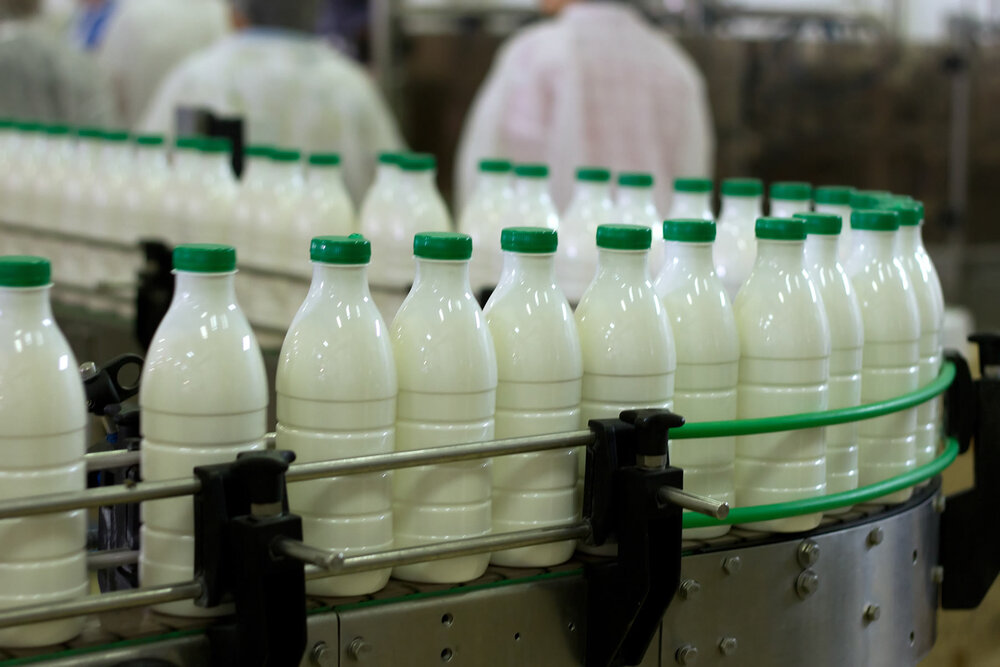Dairy consumption declining among Iranians: report

TEHRAN – The low rate of dairy consumption in Iran has always been one of the main concerns of the health ministry during recent years. However, the rate has decreased more after cutting the government subsidy on milk, which has led to an increase in milk price. Moreover, free-of-charge milk is no longer distributed in elementary schools.
Sepideh Dolati, an expert at the nutrition department of the health ministry, believes that this situation will lead to a rise in treatment costs of diseases caused by insufficient dairy consumption.
According to the food pyramid, all healthy people should consume two or three types of dairies including milk, yogurt, and cheese each day. The dairy is considered as the main source of calcium, which is essential for different parts of body, hormones, bones, and teeth, she explained.
According to a study done in the Iranian calendar year 1390 (March 2011-March 2012), Iranians consumed 190 ml, less than one glass of milk, of dairy per day, she lamented.
“Note that the recommended use of milk per day is minimum 250 grams to maximum 450 grams,” she explained.
According to global statistics in 2016, the per capita dairy consumption in Iran was 27 liters while the figure was 125 liters in Ireland and 120 liters in Finland, she added.
“Dairy products are necessary for all age groups and their omission leads to different diseases like cardiovascular diseases and osteoporosis.”
With increasing prices of dairy products during recent years, some Iranian families have to consume dairies weekly or even monthly, she said, adding, about 90 percent of Iranians do not receive an adequate amount of calcium daily.
People of different age groups need different amounts of calcium each day, she said.
Children aged between one and three years need 700 ml of calcium per day, while those between four and eight years need 1000 ml. The figure is 1300 ml for children aged between 9 and 18 years, while adults aged between 19 and 70 years need 1000 ml of calcium. Above 71 years old, one should consume 1200 ml of calcium per day, she explained.
The amount of calcium in one glass of milk or yogurt is estimated to be about 300 ml, she added.
“However, there are other sources of calcium other than dairy. For example, almond, sesame, and vegetables with green leaves as well as some fish like salmon and sardine contain calcium as well.”
But, dairy products are also good sources of potassium, protein, vitamin B and zinc, she said, concluding that according to studies, calcium in dairy products prevents obesity.
Why is dairy so important?
According to the Food and Agriculture Organization of the United Nations (FAO), milk is a major source of dietary energy, high-quality protein, and fat. It can make a significant contribution to meeting the required nutrient intakes of calcium, magnesium, selenium, riboflavin, vitamin B12, and pantothenic acid. Milk from some animal species can also be a source of zinc and vitamins A, C, D, and B6.
Bioavailability of some nutrients in milk, for example, calcium, is high compared with that in other foods in the diet.
Milk and dairy products can be important in diversifying the diet. They are nutrient-dense and provide high-quality protein and micronutrients in an easily absorbed form that can benefit both nutritionally vulnerable people and healthy people when consumed in appropriate amounts. It is important to recognize that a combination of food is necessary for a healthy diet and that milk and dairy products are not the only sources of essential nutrients.
The critical window for adequate child growth and cognitive development is between conception and 24 months of age and hence many recent international nutrition initiatives focus on the first 1000 days. The components of milk that are thought to be particularly important to supporting child growth are protein, minerals, and lactose. Milk-based food products have also been used successfully in the treatment of moderate and severe malnutrition in children. Milk fat contributes about half of the energy in whole milk. For this reason, animal milk can play an important role in the diets of infants and young children in populations with a very low fat intake, where the availability of other animal source foods is limited.
There are no global recommendations for milk or dairy consumption. Many countries have developed national dietary guidelines that are based on local food availability, cost, nutritional status, consumption patterns, and food habits. Because of differences in these factors, recommendations vary widely. Most countries recommend at least one serving of milk daily, with some countries recommending up to three servings per day. Currently, many national and international bodies recommend consumption of lower-fat dairy foods for developed/high-income countries to address the problems of overweight and obesity.
SB/MG
